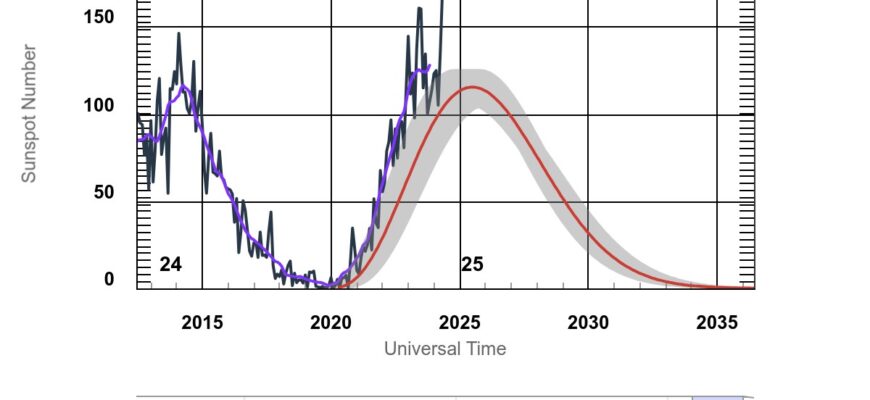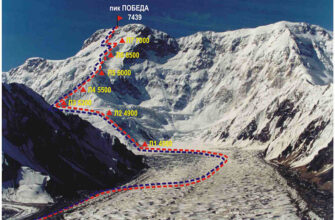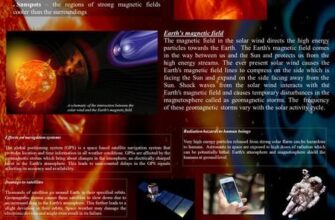Our star, the Sun, typically puts on a dramatic show of flares and eruptions, but recent observations have left solar astronomers scratching their heads. In a truly unusual event, a single active region on the Sun, designated as AR 4197, became a veritable factory of sunspots, producing over 100 new dark blemishes on its surface within a mere 24-hour period. What makes this particular outburst so perplexing? Despite the immense energy clearly involved in forming so many magnetic disturbances, not a single solar flare was detected.
The Sun`s Mysterious Quiet Inferno
The report, emanating from scientists at the Solar Astronomy Laboratory of the Space Research Institute of the Russian Academy of Sciences (IKI RAS), painted a vivid picture of the situation: “In the main solar active region, № 4197, some kind of hell was going on all day. Over the past day, probably no less than 100 new spots appeared here. Where all this energy goes is completely unclear.” This statement perfectly encapsulates the scientific bewilderment. When such a rapid proliferation of sunspots occurs, it is typically accompanied by a flurry of solar flares, those spectacular bursts of radiation that can impact Earth.
Understanding Sunspots: More Than Just Dark Patches
Before we delve deeper into the mystery, a quick primer on sunspots is in order. These aren`t just cosmetic blemishes on our star; they are regions where powerful magnetic fields emerge from the Sun`s interior, inhibiting the convection of heat from below. This makes them cooler and thus appear darker than the surrounding surface. Sunspots are the primary indicators of solar activity, often serving as the birthplaces of solar flares and coronal mass ejections (CMEs) – events that can send streams of energetic particles hurtling towards Earth.
The sheer number of sunspots in AR 4197 suggests an extraordinary amount of magnetic flux breaking through the Sun`s surface. Normally, the re-arrangement and interaction of these intense magnetic fields lead to magnetic reconnection, which powers solar flares. These flares release vast amounts of energy in the form of X-rays and other radiation, often followed by CMEs, which are massive expulsions of plasma from the Sun`s corona.
The Conundrum: Where Did the Energy Go?
This is where AR 4197`s behavior becomes truly an enigma. Imagine a boiler building up immense pressure, yet never releasing steam through its safety valves. That`s essentially what solar scientists observed. The formation of 100+ sunspots implies a significant build-up and organization of magnetic energy. To see this without any accompanying flares suggests one of several fascinating possibilities:
- Energy Storage: The energy might not have been released immediately but is instead being stored within the complex magnetic configurations of AR 4197. This could lead to a delayed, potentially more powerful, eruption in the future. It`s as if the Sun is just biding its time, perhaps for a truly grand finale.
- Stealthy Release: The energy could be dissipating in a manner not typically associated with observable flares. Perhaps it`s a slow, continuous heating of the corona, or a series of very small, undetectable microflares, collectively releasing energy without reaching the threshold for a major event. The Sun, it seems, has more than one trick up its sleeve for shedding excess energy.
- New Physics: Less likely, but always a possibility when observations defy current models, is that this event points to an uncatalogued mechanism of magnetic energy conversion or dissipation on the Sun. Each solar cycle brings new surprises, reminding us how much we still have to learn about our nearest star.
Implications for Space Weather and Earth
While the absence of flares might initially sound reassuring, a rapidly evolving, magnetically complex region like AR 4197 is still a major concern for space weather forecasters. A large, active sunspot group represents a loaded gun, even if it hasn`t fired yet. The energy held within these twisted magnetic fields could be released suddenly and powerfully.
Should this stored energy eventually erupt in a major flare or CME, the consequences for Earth could be significant. Solar events can disrupt satellite communications, impact GPS accuracy, cause power grid disturbances, and even pose radiation hazards to astronauts. Constant monitoring of such regions is crucial to provide timely warnings and mitigate potential damage to our increasingly technology-dependent infrastructure.
The Sun continues to be a dynamic, often unpredictable, celestial body, constantly challenging our understanding. The puzzling case of AR 4197 with its silent explosion of sunspots serves as a powerful reminder of the intricate processes at play within our star and the ongoing, vital work of solar astronomers. For now, scientists worldwide will undoubtedly keep a watchful eye on AR 4197, hoping it eventually reveals the secrets of its peculiar activity.









